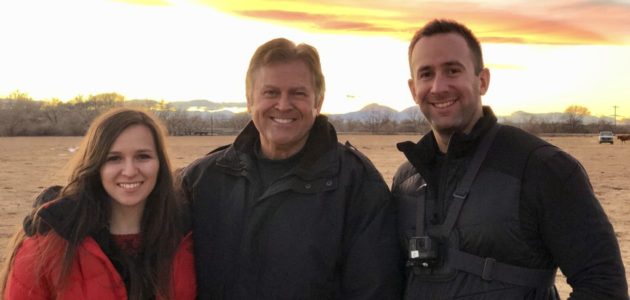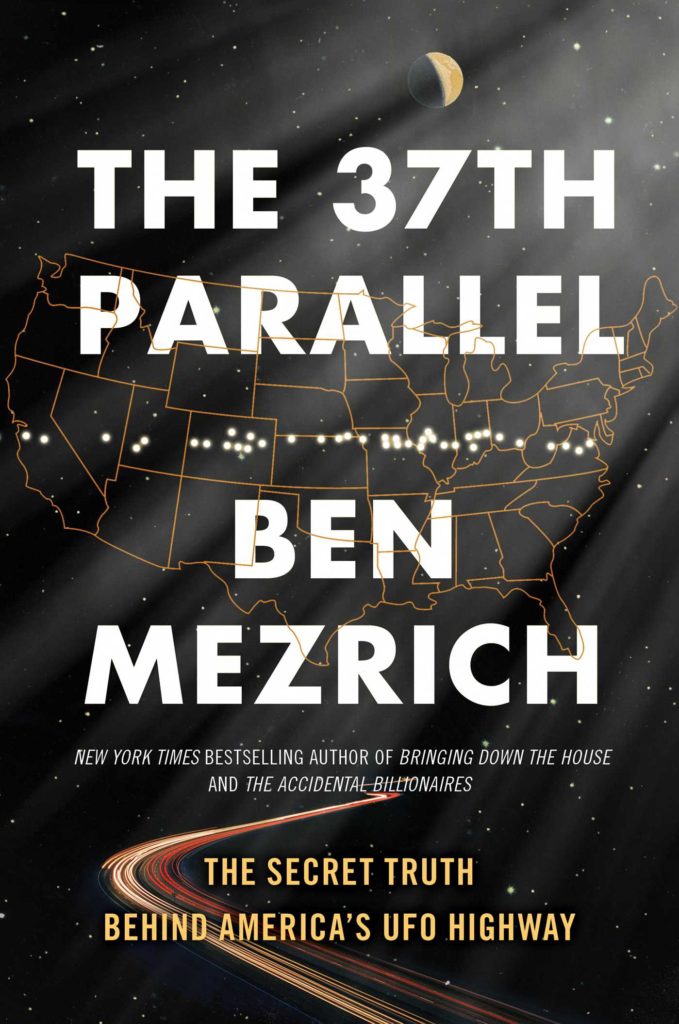Non-Registered Aluminum Alloy.
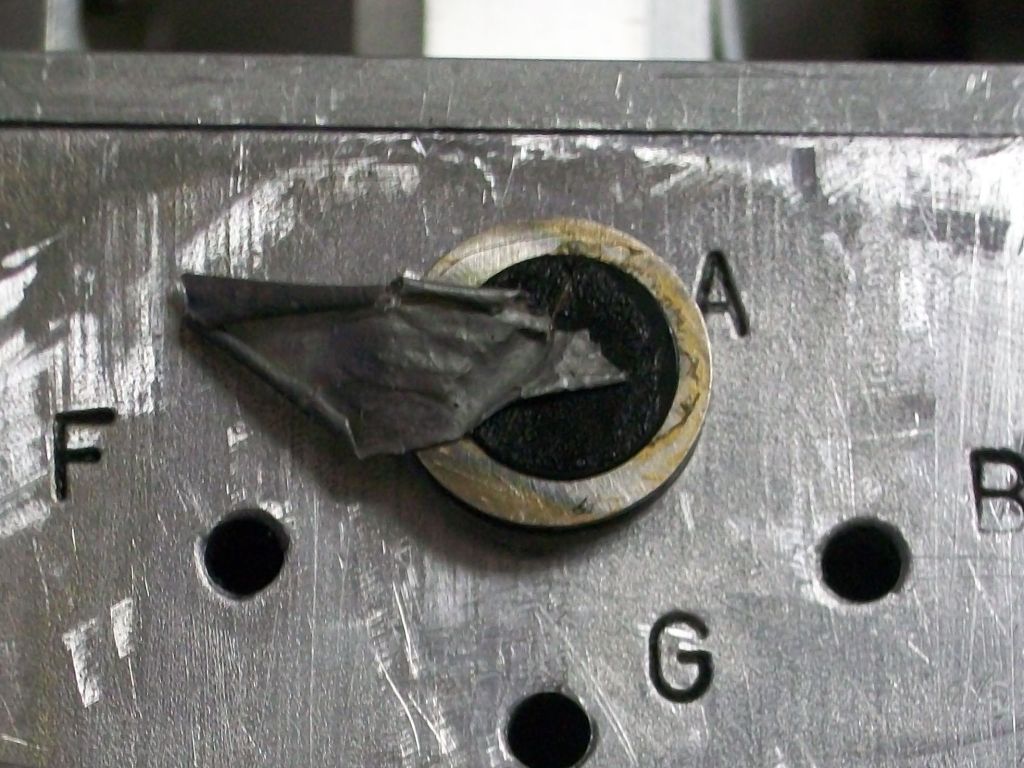
Here in the USA “non-registered metal alloys” like this aluminum fragment I found at the 1947 Roswell Crash Debris site, generally refers to aluminum alloys that are not officially registered with the Aluminum Association. This department is under the American National Standard Alloy and Temper Designation System for Aluminum. Not all alloys need to be registered, some can still be used in the industry if they’re proprietary or experimental alloys.
AI Overview on Google gives the best explanation for Aluminum Alloys:
Here’s the AI Overview detailed explanation:
Registered Alloys:
The Aluminum Association registers compositions for wrought aluminum and aluminum alloys, following the ANSI H35.1 standard for alloy and temper designation systems.
Non-Registered Alloys:
Experimental Alloys: Alloys designated with the prefix “X” were previously registered as experimental, but new experimental alloy designations are no longer granted.
Multi-Alloy Clad Aluminum Sheet: Common alloy sheet is produced from a 3XXX-series core, to which cladding layers are applied, and the use of a proprietary or non-proprietary alloy that is not specifically registered by the Aluminum Association as a discrete alloy is common.
Registration Process:
The Aluminum Association allows organizations to register compositions for wrought aluminum and aluminum alloys.
Regulatory Considerations:
Regulatory requirements can further restrict chemical compositions within registered limits, and these requirements can vary by region and end-use.
Examples of Common Alloys:
3105: Less critical building applications like roofing, siding, flashing, and ductwork.
5052: Strongest non-heat-treatable sheet and plate, versatile, and good for marine applications.
6061: One of the strongest aluminum alloys, heat-treatable, and versatile.
Note: The non-registered aluminum alloys Frank Kimbler and I found resemble the 6000 series. The 6000 series have properties such as strength, density, workability, electrical conductivity and corrosion resistance by adding other elements such as magnesium, silicon or zinc.
Examples of some Aluminum Allows are:
The American Military Bradley Fighting Vehicle (BFV). This vehicle has two different aluminum alloys, a 7xxx series and 5xxx series.
Other examples of alloys are aluminum cans, which the can is made from a 3000 series alloy and the lid is made from a 5000 series alloy.
The pieces of Aluminum Alloys that Frank and I found, were in the middle of the New Mexico desert, at the proposed 1947 Roswell Crash Debris Site under 6 to 12 inches of depth in the soil. After testing, they appear to look familiar to the 6000 series alloys but not registered.
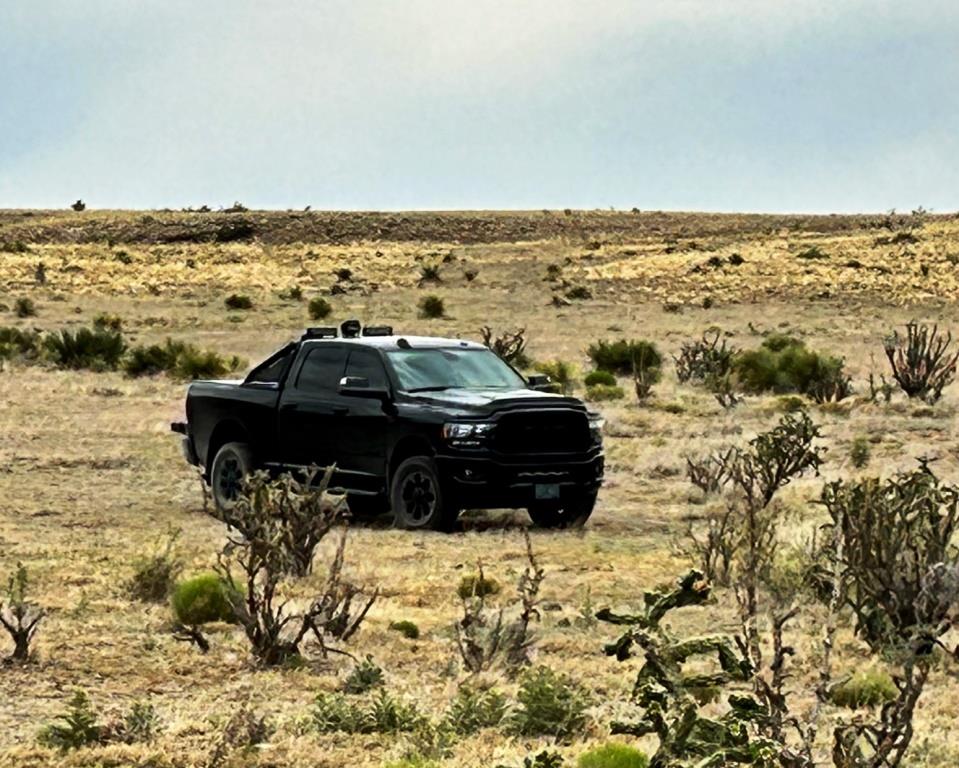
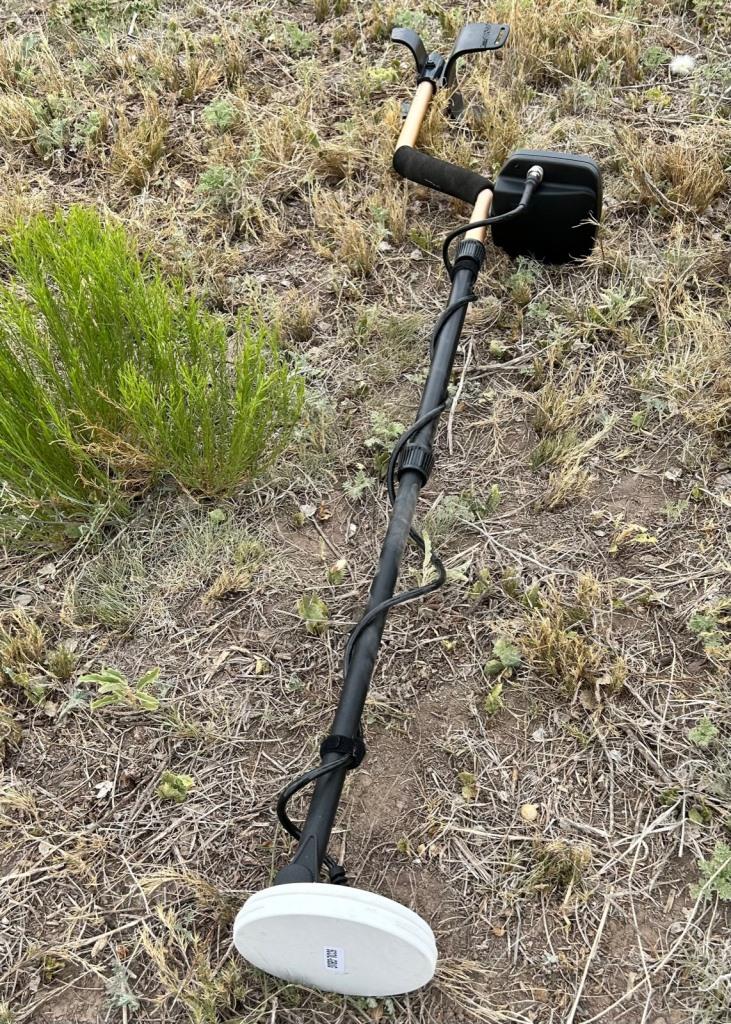
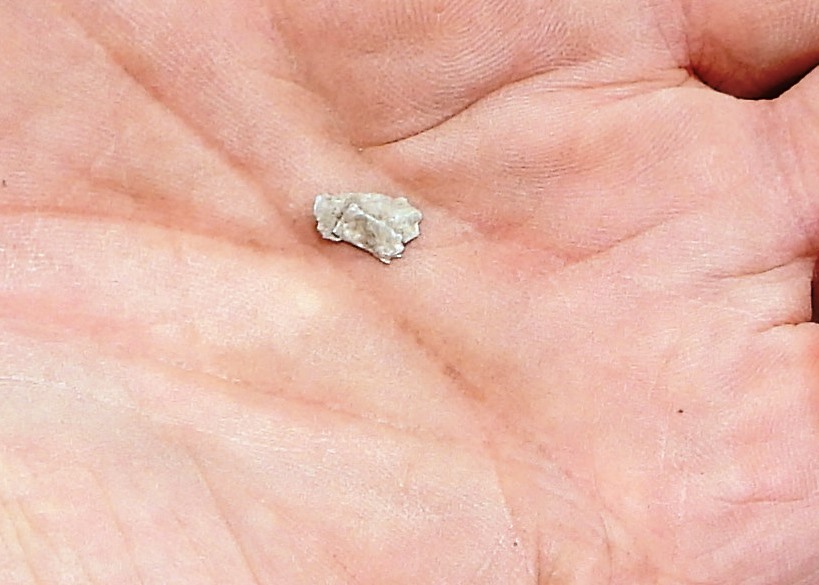
Since the first piece I found with my sister back in 2002, and other pieces Frank Kimbler and I have found, every piece we had tested cannot be identified as a registered aluminum alloy. Labs residing in New Mexico, Colorado, Texas and California, all had the same conclusions, similar to 6000 series alloys but no matches. Matter of fact, three of the labs which resided in Colorado, New Mexico and California all stated the same thing. “The pieces of alloy specimens appeared to have come from some type of a massive explosion.” Whatever created the fragments they tested, exploded with such force that the alloy was bent, torn, and melted at microscopic dimensions. Meaning folds and tears were measured in microns which is a unit of length that is one millionth of a meter or 10 (-6)m, or 1/26,000 of an inch.
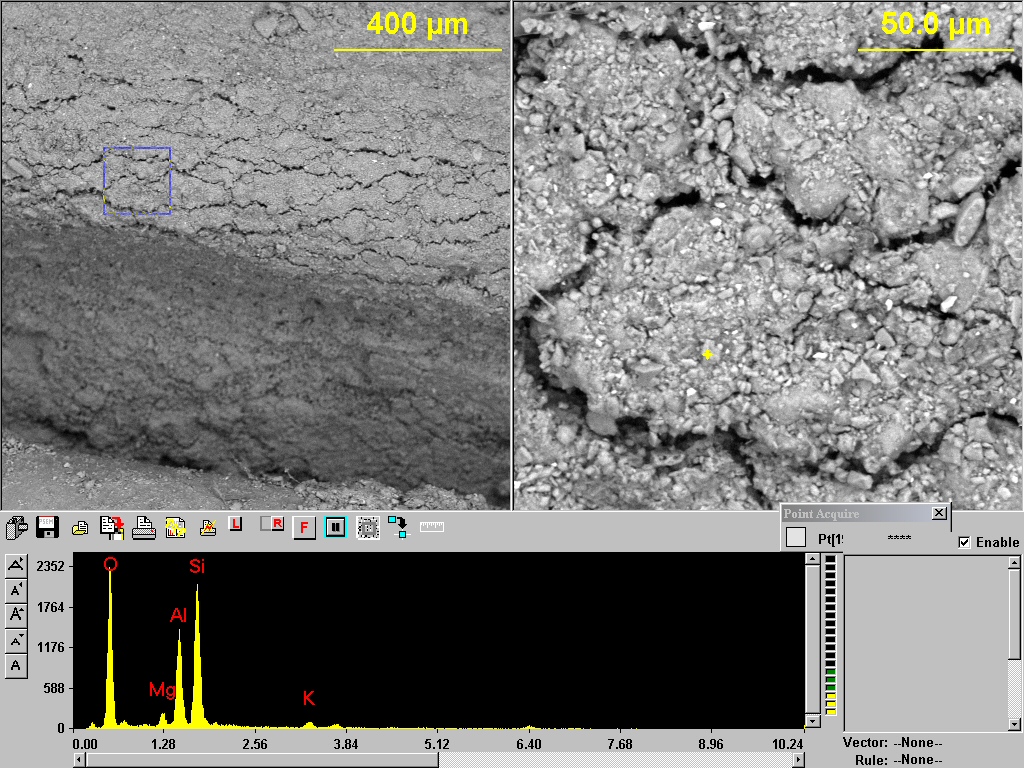
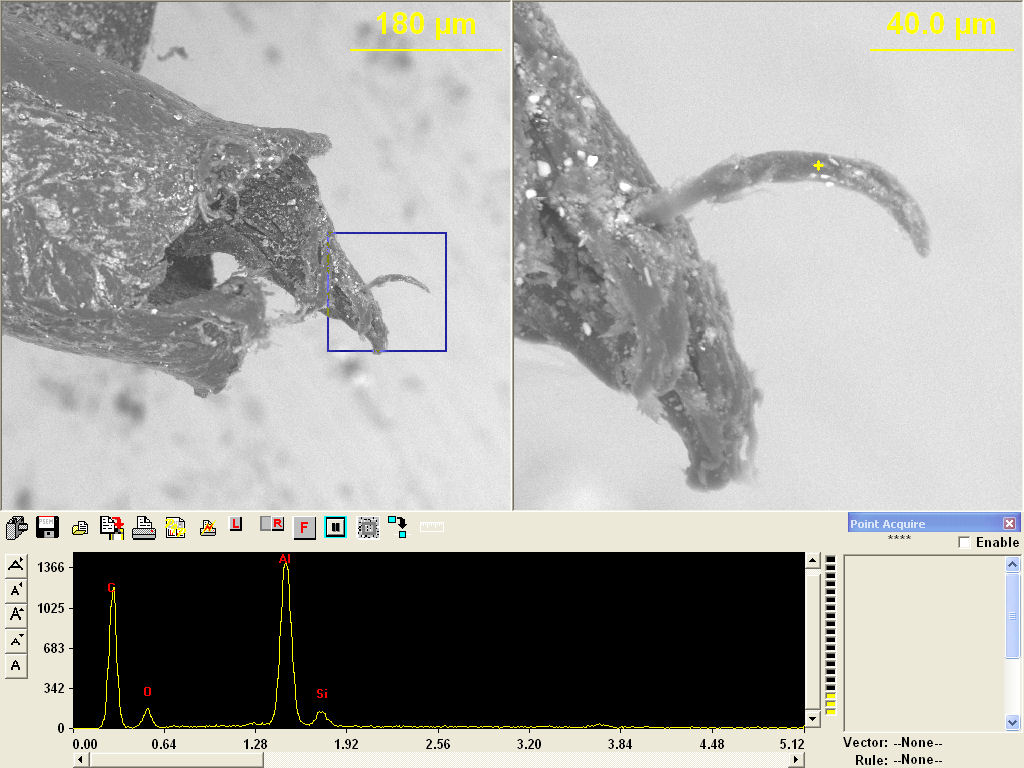
To see these anomalies in the alloy, we used a (SEM) device which not only can see at microscopic levels but can also determine what the alloy is made of.
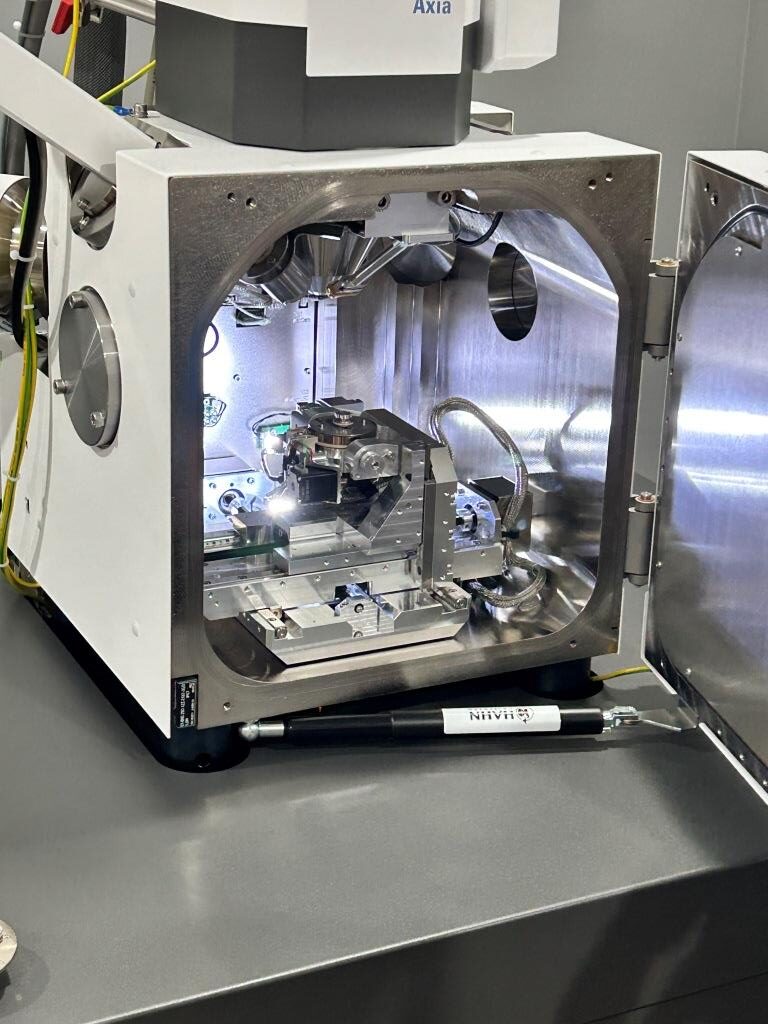
A “Scanning Electron Microscope” (SEM) produces an image of a sample by scanning the surface with a focused beam of electrons. The electrons interact with atoms in the sample, producing various signals that contain information about the surface topography and composition. The (SEM) will tell you what the object you’re looking at is made of.
The following is one of the lab analyses from my piece of Roswell Debris.
Lab analysis.
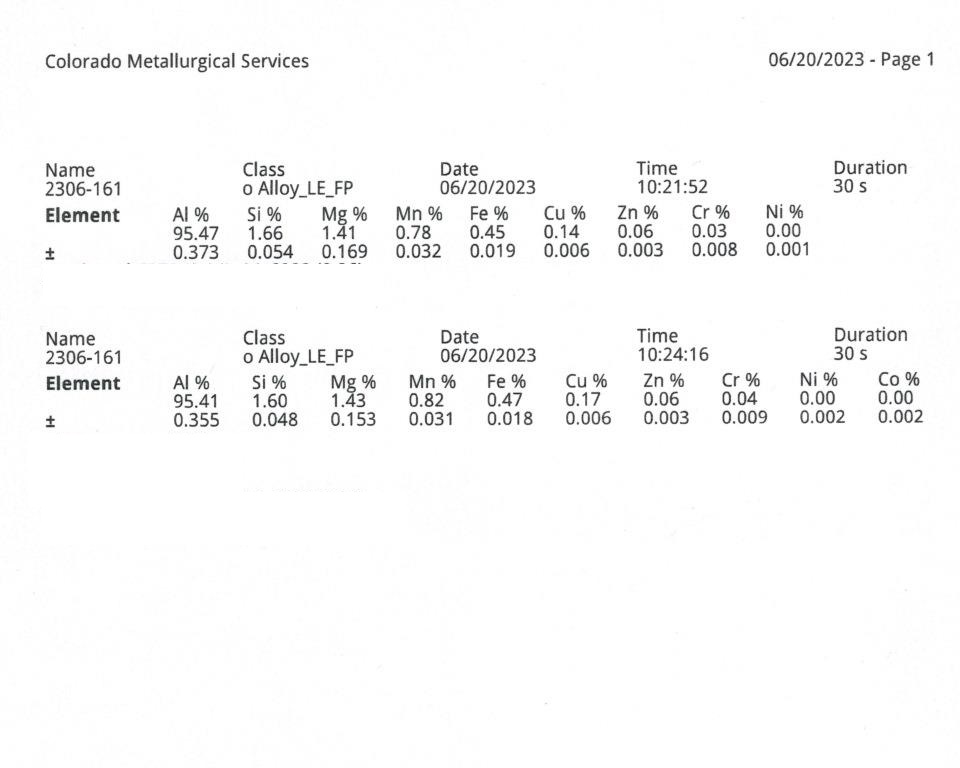
The debris pieces I tested along with the ones Frank Kimbler tested, appear to be similar to the 6000 series due to: aluminum (Al), magnesium (Mg), silicon (Si). Other elements seen are Manganese (Mn), Iron (Fe), zinc (Zn) and Chromium (Cr).
So far, the main elements we’ve seen from all of our samples, aluminum, magnesium and silicon resembles an un-registered alloy in the 6000 series.
What is the 6000 series?
The Aluminum Association:
The 6xxx series are versatile, heat treatable, highly formable, weldable and have moderately high strength coupled with excellent corrosion resistance. Alloys in this series contain silicon and magnesium in order to form magnesium silicide within the alloy.
Another property a 6000 series alloy has is, electrical conductivity. (Interesting.)
The bottom line:
- The pieces of metal Frank Kimbler and I found starting with the first piece I found back in 2002 at the Roswell Crash Debris Site proves without a shadow of doubt that something did happen at that exact location.
- All the pieces of metal we have found which were tested at credible labs in four different states all show to be a non-registered aluminum alloy closest to the 6000 series of alloys.
- All pieces tested under microscopic conditions also show extreme trauma to the alloy, explosive in nature.
Fact!
The pieces of metal debris we’ve found PROVES something crashed or exploded in the exact area where eyewitnesses from 1947 stated a possible Flying Saucer had crashed. Actually, the debris site is where the craft skipped hitting the ground and leaving debris, then the main body of the craft later crashed some 17 miles further.
Also, forget about Project Mogel. Some critics are saying what crashed at the Debris Site was the US Army Air Forces, Project Mogul. This was a top-secret high-altitude balloon chain carrying electronic equipment to detect sound waves which were generated from Soviet atomic bomb tests. Even though that project was top secret, the materials used to make it was not. The balloon fibers were the same as high altitude weather balloons along with the cables holding them and the electronics you could purchase anywhere. Matter of fact, most of these balloon chains included an identification plate with a phone number. Who ever found the fallen balloon chain would simply call the phone number and get a reward once the balloon chain was retrieved by the military.
Thoughts:
- Could whatever have crashed at the debris site been a military top secret flying vehicle?
- Could that military vehicle not be of USA origin, but maybe German or Russian?
- Could whatever crashed actually have been a UFO of ET nature with aluminum alloys which are still non-registered to this day!
At this time Frank Kimbler and I are in the next phase of testing to learn more about these strange pieces of metal. As we learn more, I will put updates on this website. But the one thing I can tell you without a shadow of a doubt is:
Something did crash and skip at the famous 1947 Roswell Debris Site, and it wasn’t a high-altitude balloon chain. So maybe you should start re-thinking the whole Roswell UFO scenario.
Chuck Zukowski
Blog Info:
Aluminum Org:
https://www.aluminum.org/industry-standards
Category: Roswell, Roswell Dig, The Z-Files






